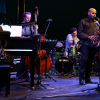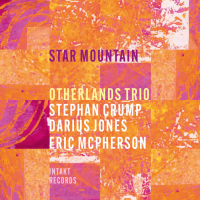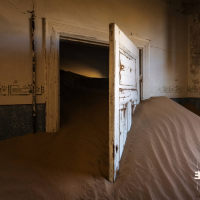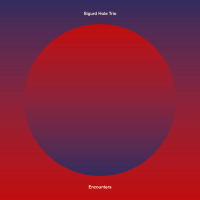Home » Jazz Articles » Album Review » Chet Doxas: Rich in Symbols II
Chet Doxas: Rich in Symbols II
The Group of Seven tended to favor expressionist techniques that evoked an intensely emotional response to nature, and Doxas has done the same here, with a level of feeling that, although sometimes moving in unpredictable directions, is always markedly sensitive and sympathetic. His winsome clarinet leads the way on the folk-like melody to "The Slopes of Sainte-Tite-Des-Caps," with Grass' nuanced layers adding depth before Sacks takes the piece a bit outside with a rangy solo. The album generally stays in restrained territory, but the energizing group interaction on this piece is one of the record's highlights.
Some of the pieces offer surprises, such as the electronic drum programming provided by Evan Shay at the opening of "Snow Clouds," after which the track shifts gears and Doob develops a light funk-based groove. And "Tree Trunk" starts tentatively—just the traces of brushwork and a few isolated notes on the piano—before the piece takes a minimalist turn, with gradually aggregating phrases and tones further augmented by electronic effects. There are also field recordings scattered throughout the album, perhaps the most effective example being "Jack Pine," which builds its melody around an archival saxophone clip that is taken up directly by the band, with Doxas' dusky tenor saxophone exerting a lovely, gentle pull.
Doxas' compositional creativity is on full display here, and the music is rarely exactly what one expects. But the most direct moments are definitely the most compelling ones. The stark beauty of "House of Yprès" features a recited poem by Sam Roberts conveying the horrors of World War I, with a sparse accompaniment from Sacks ideal in stripping the music to its essence; when Doxas' mournful tenor finally enters, the effect is haunting. And the closing track, "The Front of Winter," may be even better—a gorgeous, hymn-like tribute to the natural world that is moving in its simplicity and emotional power, and with Doxas at his lyrical best, ending the album memorably.
Track Listing
The Slopes of Sainte-Tite-Des-Caps; Snow Clouds; The Jack Pine; Tree Trunk; North Shore, Lake Superior; House of Yprès; The Front of Winter.
Personnel
Additional Instrumentation
Evan Shay: drum programming (#2); Micah Frank: electronics, field recordings; Sam Roberts: spoken word (#6).
Album information
Title: Rich in Symbols II | Year Released: 2022 | Record Label: Justin Time Records
Tags
PREVIOUS / NEXT
Support All About Jazz
 All About Jazz has been a pillar of jazz since 1995, championing it as an art form and, more importantly, supporting the musicians who make it. Our enduring commitment has made "AAJ" one of the most culturally important websites of its kind, read by hundreds of thousands of fans, musicians and industry figures every month.
All About Jazz has been a pillar of jazz since 1995, championing it as an art form and, more importantly, supporting the musicians who make it. Our enduring commitment has made "AAJ" one of the most culturally important websites of its kind, read by hundreds of thousands of fans, musicians and industry figures every month.

























